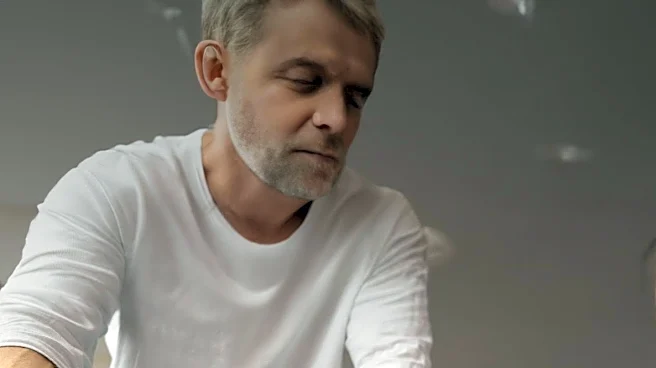What's Happening?
Logan Barber, a 37-year-old telecommunications contractor and competitive powerlifter, suffered a massive hemorrhagic stroke in September 2024, leaving him in a coma and with a grim prognosis from doctors.
His wife, Stacie Barber, a certified physical therapist, refused to accept the doctors' predictions that Logan would never walk again or live a highly functional life. Drawing on her expertise, Stacie initiated a rigorous rehabilitation plan, using physical therapy techniques to stimulate Logan's body and mind. Despite the initial lack of movement due to his coma, Logan began responding to cues and showing signs of recovery. Over time, he progressed from being wheelchair-bound to regaining significant physical abilities, including squatting, deadlifting, and benching weights. Logan's recovery has surpassed medical expectations, allowing him to return to work and drive again.
Why It's Important?
This story highlights the critical role of early intervention and personalized rehabilitation in stroke recovery. Stacie Barber's proactive approach demonstrates the potential for significant recovery even when medical professionals have limited expectations. Her actions underscore the importance of advocacy and the need for healthcare systems to provide comprehensive and accessible rehabilitation services. Logan's recovery not only impacts his family but also serves as an inspiring example for stroke survivors and their caregivers, emphasizing the power of determination and specialized care in overcoming severe health challenges.
What's Next?
Logan Barber continues to attend physical therapy twice a week and strength trains four times a week, focusing on improving his hand function and managing left-side foot drop with assistive devices. Stacie Barber advocates for better healthcare standards, emphasizing the need for accessible and comprehensive rehabilitation services. Their journey may inspire changes in healthcare practices, encouraging providers to adopt more personalized and proactive rehabilitation strategies for stroke patients.
Beyond the Headlines
Stacie Barber's story sheds light on the broader implications of healthcare advocacy and the potential for individuals to influence medical outcomes through determination and expertise. Her experience highlights the ethical responsibility of healthcare providers to offer hope and innovative solutions, challenging traditional limitations placed on patients' recovery potential. This case may prompt discussions on the need for systemic changes in healthcare to prioritize patient-centered care and empower caregivers with the tools to advocate effectively.











